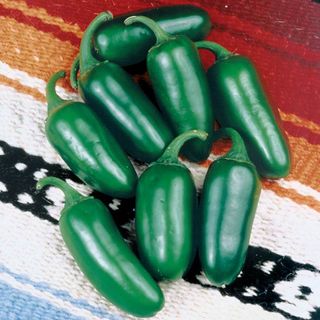It may be prickly business, but propagating cacti is very easy! This is especially the case with the Opuntia genus, also known as prickly pear cactus. These drought-tolerant plants can be propagated by cuttings or seeds, both of which we’ll walk you through. Soon, your single cactus will become a whole garden of southwestern flair, thanks to prickly pear cactus propagation!
Opuntia is a vast genus of over 150 species. If you look through pictures of some species, like Opuntia microdasys, you’ll easily get a feel for their characteristics. They have segmented stems, called paddles, that are usually topped with pink or yellow flowers. The fruit is called ‘tuna’ and is often eaten raw (Opuntia ficus-indica is grown commercially for both the pads and fruit!). The paddles are covered in glochids, which is a fancy name for tiny hairs and pesky spines. The glochids are painful to touch and hard to remove from skin, so always wear thick gloves while working with prickly pears and their spiny fruits.
It’s just as easy to grow prickly pear cactus as it is to propagate. Although cactus is synonymous with hot weather, there are Opuntia species that grow naturally in parts of Canada! This is one of the cold-hardiest cacti out there, withstanding constant temperatures well below freezing. After propagating, you should have no problem keeping your new plants happy in the direct sunlight outdoors.
Propagation 101
Prickly pear cactus propagation seems intimidating, but isn’t hard. Source: mclcbooks
It sounds complicated, but propagation is actually a very simple and natural way for drought-tolerant plants to reproduce. If you’ve ever planted a seed – which we’re guessing you have – you’ve propagated a plant. Growing a cactus plant by seed is a slow process though, especially compared to other plants. That’s why most gardeners prefer to propagate through stem and leaf cuttings.
Plants are able to grow from their roots and tips because of meristems. Meristems contain rapidly-dividing cells that can turn into any number of specialized cells (like stem cells in humans). Most plants, including succulents, also have meristems at their leaf nodes. When the nodes are damaged and put under the right circumstances, the meristem can produce root cells. This is exactly what we want for vegetative propagation.
With prickly pear cacti, we damage the node by removing a paddle. After the paddle’s wound has dried and callused over, we give it moisture and wait. Roots appear, closely followed by new paddle growth. Like a seed embryo, the cutting provides the nutrients required to sustain the new growth.
Materials for Vegetative Propagation
Growing prickly pear cactus by vegetative propagation is a time-sensitive matter, so be sure to have all your supplies beforehand. Here’s what you’ll need:
- A healthy, mature prickly pear mother plant
- Heavy-duty gloves
- Well-draining growing medium
- A small container with drainage holes
- A misting bottle
- A sharp, clean knife (optional)
- Rooting hormone powder (optional)
How to Propagate Prickly Pear Cactus by Cuttings
 The upper pad on this prickly pear is prime for propagation. Source: Mathew Knott
The upper pad on this prickly pear is prime for propagation. Source: Mathew Knott
It’s an easy process, but we’ll make it even simpler by breaking down the steps. Here’s everything you should do to successfully propagate and grow prickly pear cactus cuttings.
Take the Cutting
Start with a mature prickly pear cactus that’s disease and pest-free. It should be actively producing new growth and not dormant. Select a top prickly pear oval segment that’s at least an inch long. Don’t use paddles that are blooming, since their energy is being directed to the flowers.
Don your heavy-duty gloves and harvest cuttings by twisting the paddles gently at the natural seam. Make sure that the entire base of the paddle comes off. It must have the meristem at the end in order to regrow. If the paddle isn’t coming off, use a clean knife to gently cut it free.
Place the cutting somewhere it can dry for a few days, like on a paper towel in a dish. Allow at least 24 hours for the wound to dry up and form callus tissue. This part is crucial because if you water the cutting before the wound has sealed itself off, it will rot.
If you want to give your cutting a boost, dip the cut edge in rooting hormone powder before setting it out to dry.
Prepare the Soil
While your cutting is scabbing over, get its new home ready. Use a small container that’s suited to the size of the cutting. Fill it with well-draining soil. Succulent mixes or seed-starting soils work well here. Smooth it out to make a flat surface that cactus can stand upright in.
Plant the Cutting
When your prickly pear pads have callused over nicely, it’s time to plant. Dig a hole equal to the base of the cutting and push one-third of the pad gently in the dry soil with the cut side down (it’ll look like a little plant for your room’s decor!). If the prickly pear cutting is too large to stay upright, simply lay it on its side with the callused edge resting in the center of the container.
Give the soil a good misting of water so it’s evenly moist. Try to keep the top of the cutting dry so it doesn’t rot. Mist whenever the soil begins to dry out. When growing prickly pear cacti, you only water sparingly, but that’s not the case with young ones. The cuttings need consistent moisture for their first year of growth. Keep the cactus cutting plants in a warm room with filtered sunlight.
After a few weeks or months (depending on the species), the planted cutting will grow roots. You can check them by gently wiggling the cutting. If it stays firm in the soil, the plant’s root ball is well-established. At this point, slowly introduce the cutting to direct sunlight indoors so it can amp up the photosynthesis. However, continue watering the soil regularly until the cactus plant fully matures. In time, new paddles will pop up on top of the prickly pear cutting and you can decrease supplemental watering.
How to Grow Prickly Pear Cactus from Seed
 The fruit is full of small seeds to start from. Source: 潘周迪
The fruit is full of small seeds to start from. Source: 潘周迪
If vegetative propagation is too easy for you or you want to experiment more with prickly pear cacti, you can propagate through seeds. These seeds have a low germination rate, so it will take strategy and patience to coax them into growing prickly pear cactus. Prickly pears usually need to be a few years old before they’ll produce fruit, but planted cactus grown from cuttings may produce faster.
Harvest the Seeds
Start by plucking the mature fruit from your parent plant. The fruit will have darkened in color, gotten soft, and started to die back. Stash them in a paper bag for a few days so they can dry out.
Next, cut open the fruit to access the seeds. If you’re having a hard time breaking through the skin, soak them in water for a few hours. Inside will be an abundance of pale seeds. Remove as much of the pulp as possible, then give them a rinse. Move the seeds to a warm, dry room for a couple of weeks so they can completely dry out.
Stratify the Seeds
In order to germinate and grow prickly pear cactus, the seeds have to go through cold stratification. This means they need a period of cold temperatures to go dormant in, followed by warm temperatures and moisture to wake them back up.
Before beginning cold stratification, scratch the seed coat to weaken it. Prickly pear cactus seeds have strong coats that make it difficult for moisture and temperature changes to reach the embryo. This is handy in nature when the seeds are distributed by harsh weather and animals. In the comfort of our garden sheds though, the seed coat is too overprotective. By slightly damaging it, we make it easier for the embryo to be exposed to the outside world and receive its signals to germinate.
A simple way to weaken the seed coat is to rub it lightly with sandpaper. You want to scratch it without exposing the embryo inside in a process referred to as scarification. Next, soak the seeds in room temperature water for 2-3 days. Seal the seeds in a plastic bag and store them somewhere cold and dry. You can keep them in the freezer or anywhere that has temperatures below freezing.
Plant the Seeds
After about a month, bring the prickly pear cacti seeds back to room temperature for planting (at least by late spring if you want to transplant outside). Prepare small containers for the seeds, each of which must have drainage holes. Use a cactus or seed-starting soil mixture (just like you would for propagating cuttings). Moisten the soil well.
Plant the prickly pear cactus seeds very shallowly. Remember that these seeds have a sporadic germination rate, so plant more than you plan to grow. You can also do a quick viability test by dumping the seeds in a bowl of water. Only the seeds that sink to the bottom are viable and stand a chance at germinating.
Keep the soil at 70°F or higher (you may want to use a heating mat). It can take anywhere from a few days to a few months for sprouts to appear, so be patient. Just keep the soil moist and warm. You may want to add a humidity dome so you don’t have to water so often.
After the seeds have sprouted, remove the heating mat if you used one. Place the young plants in brighter light with warm soil temperatures. Continue to water consistently until the seedlings have grown into mature prickly pear cactus plants. You can eventually transplant your cactus outdoors unless nighttime temperatures drop below freezing (depending on the species).
Frequently Asked Questions
 Select healthy cactus pads to propagate, either small or large. Source: Mauricio Mercadante
Select healthy cactus pads to propagate, either small or large. Source: Mauricio Mercadante
Q: Can you propagate prickly pear cactus in water?
A: Yes! Only submerge the bottom of the cutting after it’s already scabbed over. Once the roots have grown in and you start to see vegetative growth, plant the cactus immediately in well-draining soil so it can absorb nutrients.
Q: How long does it take for prickly pear to root?
A: Prickly pear cactus cuttings begin producing roots in a few weeks or months, depending on the species.
The Green Thumbs Behind This Article:




